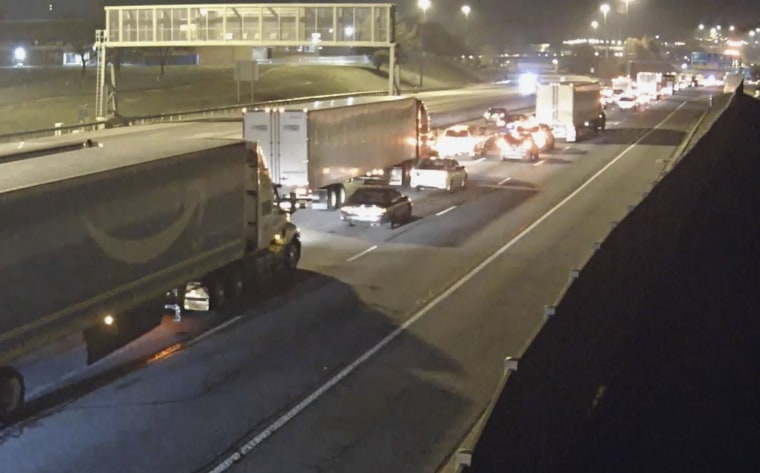PENNSVILLE, N.J. — A Delaware bridge shut down in both directions by a gas leak Sunday evening, bringing traffic on a major East Coast artery to a standstill on one of the busiest travel days of the year, has reopened.
The Delaware Department of Transportation tweeted late Sunday that the Delaware Memorial Bridge was "REOPENED to traffic" and urged travelers to drive safely.
The leak stemmed from the Delaware chemical production facility Croda Atlas Point, located near the twin suspension bridges on a major route between Washington and New York City, Holloway Terrace Fire Company Public Information Officer George Greenley said.
The leaked chemical was ethylene oxide, a highly flammable gas that is a finished product stemming from methanol, Greenley said.
"If that flume would have had an ignition source it could have been catastrophic with the bridge traffic," he said.
The bridge closed around 5 p.m. ET Sunday. Croda operators requested it be shut down, the Delaware River and Bay Authority tweeted.
A Twitter account for the Delaware Memorial Bridge was inundated by social media users stuck for hours: "This 'situation' definitely wasn't in our Thanksgiving plans, for sure. Traffic nightmare to say the least," the account wrote.
Greenley said fire officials were waiting for pressure to dissipate in the pipes at the facility before reopening the bridge. He said earlier Sunday that the chemical was dissipating fairly quickly from the pipes and estimated the bridge could reopen in the next few hours. The state Division of Natural Resources and Environmental Control was also on scene at the leak.
Traffic on both sides of the bridge was being diverted to other crossings, including the Commodore Barry Bridge to the north, causing what the authority called a "parking lot" situation to disperse to other clogged roadways.
The bridge carries Interstate 295 on eight lanes over the wide southern reaches of the Delaware River between northern Delaware and southern New Jersey. Southbound traffic from the New Jersey Turnpike also flows across it. More than 80,000 vehicles make the crossing daily, according to the authority.
Lashrecse Aird, a member of the Virginia House of Delegates, was stuck in the bridge traffic on her way home to Virginia from New York. The Thanksgiving commute usually takes her six hours, she said, but she had already been on the road for that amount of time and her GPS told her she had more than three hours to go.
A police vehicle and a hazardous-materials truck were blocking the bridge when she approached. She was at a standstill for an hour before being redirected, she said.
"We ended up taking 295 North to get onto 322, directing us to the Barry Bridge," she said, "and then that is going to take us back south. Everyone is coming that direction, so we are still really not moving."
